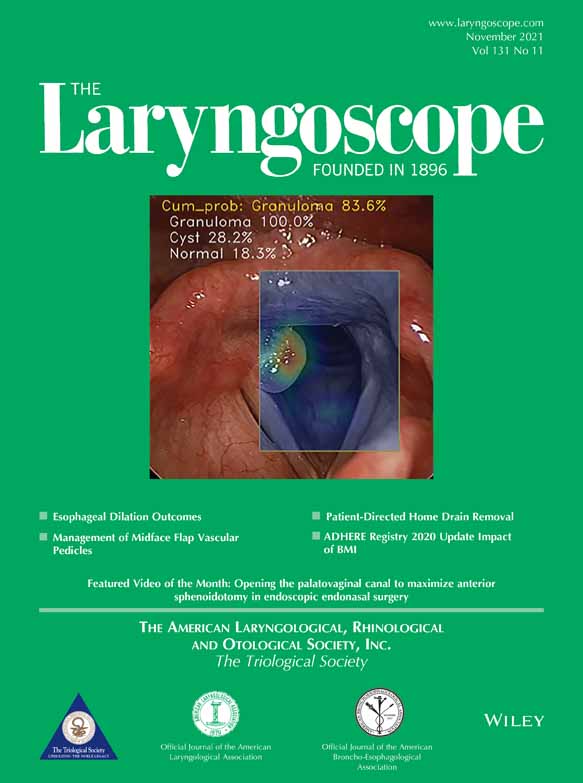Very-Low Energy Monopolar Reduces Post-Tonsillectomy Hemorrhage Versus Standard Energy Techniques
Editor's Note: This Manuscript was accepted for publication on April 07, 2021.
Abstract accepted for poster presentation at the Triological Society Combined Sections Virtual Meeting, January 29–30, 2021.
The authors have no funding, financial relationships, or conflicts of interest to disclose.
Abstract
Objectives/Hypothesis
To compare rates of post-tonsillectomy hemorrhage (PTH) between a very-low energy transfer monopolar technique (VLET) and standard energy techniques.
Study Design
Retrospective controlled cohort study.
Methods
All tonsillectomies performed by practice physicians during the period January 1, 2010 to August 31, 2019 were identified. Three groups were created based on surgeon technique utilization: the study group (VLET) and two control groups (exclusive standard energy monopolar [Standard]; exclusive “hot” technique without exclusive monopolar use [Mixed “Hot”]). Each group's PTH occurrences requiring surgical intervention (PTHRSI) were identified and rates compared.
Results
During the study period 11,348 tonsillectomies were performed (4,427 Standard, 1,374 VLET, 5,547 Mixed “Hot”), and 167 (1.47%) PTHRSI events identified (14 primary (<24 hours), 153 secondary (>24 hours), 12 repeat (>1PTHRSI/patient). Compared to the Standard group secondary and total PTHRSI rates (1.47%, 1.60%), the Mixed “Hot” group experienced similar rates (1.57%, P = .54; 1.68%, P = .64), but the VLET group experienced significantly lower rates (0.15%, P = .0026, adjusted odds ratio [OR] 0.114 [0.028–0.469]; 0.22%, P = .0016, adjusted OR 0.155 [0.048–0.494]). Age was a significant risk factor for both secondary and total PTHRSI (P = .0025, P = .0024, adjusted OR 1.02/year [1.01–1.03]). No significant difference in rate of primary PTHRSI was seen collectively or in any age group. The <12VLET Group experienced 0 episodes of secondary PTHRSI and a total PTHRSI rate of 0.09% in 1060 tonsillectomies.
Conclusions
Standard energy techniques had an adjusted odds ratio over 8-fold higher for secondary PTHRSI and over 6-fold higher for total PTHRSI compared to the minimized energy transfer VLET technique.
Level of Evidence
3 Laryngoscope, 131:2505–2511, 2021




